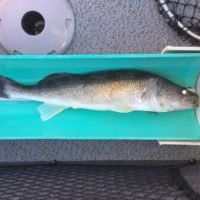Yes you can. The DNR does a LL Survey of Mille Lacs and the report from the previous year is typically available June/July. I ask and receive it every year.
I asked the DNR if it was okay to share the LL survey and the response was yes it is public information. You can ask the DNR for the survey.
The following are some cherry picked comments from the LL that I have pulled from the Walleye section.
Please don’t turn this into a DNR bashing discussion.
An interesting pattern was apparent for Walleye catch in the individual nets, with the vast majority of nets in the southern half of the lake showing highly reduced catches compared to their average catch across years, with catch tending to improve at netting locations heading into the northern portion of the lake (Figure 32). It doesn’t appear that forage levels were responsible for the pattern observed in Walleye catch across the lake as age-0 Yellow Perch, the
22 typical preferred forage species in Mille Lacs, was relatively limited in the offshore areas of the lake, but available in the nearshore regions (Figure 33). Additionally, the amount of Yellow Perch under 6 inches observed in the standard gill nets does not match up well with the pattern of catch observed with Walleye, further suggesting forage is not playing a major role in the unusual dispersal of Walleye throughout the lake during the netting period (Figure 34).
The truncation of the 2013 year class beyond 21 inches is particularly interesting as the 2018 sampling indicated reasonably good numbers of fish available to grow into the 21 inch to 22 inch size groups over the 2019 summer (Jensen 2019). However, it appears that fish available to move into these size classes have become depleted, most likely due to angler cropping from a 21 inch to 23 inch harvest slot over the winter fishing season and through May of 2019.
Walleye condition, an indication of fish fatness, was exceptionally poor across all size ranges (Figure 39). Medium sized Walleye (14”-20”) exhibited the worst condition ever recorded, while small (<14”) and large Walleye (>20”) had the second worst condition ever observed.
